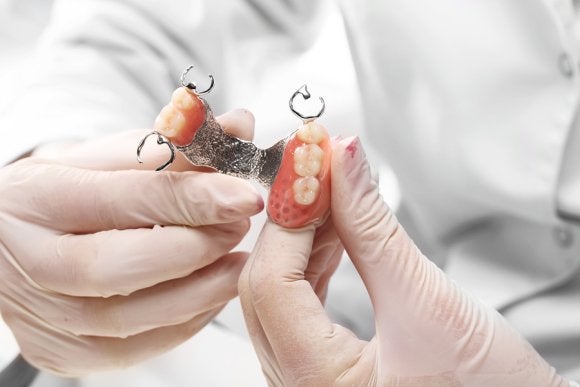-
Treating an Abscessed Tooth
If you have an abscessed tooth, it means that the bulb of your tooth is infected. A pocket of puss forms under the tooth and is usually quite painful. The infection is caused by advanced gum disease in Bel Air or tooth decay and the infected portion of the abscessed tooth will need to be removed. To treat an abscessed tooth, a dentist in Bel Air will perform a root canal .
Watch this video to learn more about treating an abscessed tooth and what causes the infection to happen. In addition to tooth decay, a cracked tooth can also cause an abscessed tooth. A root canal is when a dentist removes the infected portion of the tooth and seals the tooth with a crown.
-
Steps to Take in Preventing Gum Disease
Gum disease, also known as periodontal disease, is one of the leading causes of tooth loss in adults. Initially, periodontal disease in Bel Air can be difficult to detect until it has advanced. In the early stages of gum disease , usually referred to as gingivitis, most people may not notice any signs at all. This is why it is so important to regularly visit a dentist to monitor signs of gum disease. Luckily, gum disease is easy to prevent. Since it is caused by bacteria, it is simply a
 matter of reducing the amount of bacteria in your mouth. Keep reading for tips on gum disease prevention.
matter of reducing the amount of bacteria in your mouth. Keep reading for tips on gum disease prevention. Routinely Brush and Floss
A dental hygiene routine is key to preventing gum disease. At a minimum, you should brush your teeth twice a day and floss teeth once a day. For the best results, brush and floss after each meal. This will help eliminate food particles that can get stuck in between teeth and cause bacteria to grow. It is important to use a toothbrush with different lengths of bristles to ensure that all surface area of each tooth is reached. Using toothpaste with fluoride helps protect your mouth from gum disease. When flossing, be sure to get in between each tooth, especially the back molars. In addition to brushing and flossing, a mouthwash can help rinse away pieces of food and also freshen your breath.Regularly Visit the Dentist
No oral health care routine is complete without annual visits to the dentist. Most dentists recommend regular visits every six months. During a dental exam, a dental hygienist will perform a teeth cleaning that is able to remove plaque and tartar that you cannot clean off at home. Once plaque hardens, it forms tartar, which can lead to gum disease. Regular dental cleanings help prevent tartar buildup. A dentist will likely take x-rays to detect any abnormalities in your mouth. By regularly visiting your dentist, you can also notify them of any new pain or other problems. Early detection of problems can prevent major problems down the road and also help you avoid the need to see an emergency dentist. -
The Purpose of a Fixed Bridge
A dental bridge is just what it sounds like, as it bridges the gap between two teeth. If you are missing a tooth, dentists in Bel Air will likely recommend a fixed bridge. The bridge itself is composed of a prosthetic tooth that rests in the gap and is attached to two crowns that sit on top of the adjoining teeth. In many cases, the surrounding teeth are modified so that the dental crown will securely fit on top of the existing tooth. Dentists may recommend a bridge over a dental implant since it is a quicker form of treatment to replace a missing tooth.
The purpose of the fixed bridge is to prevent any issues with your remaining teeth and gums following the loss of a tooth. When a tooth is missing, teeth can drift towards the gap. This can create alignment issues. Additionally, when a tooth is missing, the bone can begin to deteriorate where the tooth once was. A dentist can place a bridge to help keep your bone and jaw structure in tact.

-
Reasons to Choose Invisalign
Teenagers and adults have many options for getting a straighter smile. While braces in Bel Air are a common choice, more and more patients are asking their dentists about Invisalign. Invisalign offers a number of benefits that traditional braces cannot match. This article will highlight just some of the reasons you should pick Invisalign to achieve your

perfect smile.
The Aligner Trays Can Be Removed
Unlike traditional braces, which do not come off for the entire duration of treatment, Invisalign aligner trays do not need to be worn 24 hours each day. Since you can remove the trays at mealtimes, it means that Invisalign has no food restrictions. You do not have to make any modifications to your diet or worry about food getting stuck in between wires and brackets. Instead, trays can simply be removed and put back once mealtime is over. This also means that your dental hygiene routine of brushing and flossing can continue normally throughout your orthodontic treatment, leaving you less susceptible to gum disease.They Are Virtually Invisible
Many adults are hesitant to seek orthodontic treatment for crooked teeth, as they are worried about their appearance. Since Invisalign aligner trays are made from a clear plastic, and are custom made to fit directly over your teeth, they are virtually invisible. In fact, most people will not even know you are wearing Invisalign—unless you tell them.It is Effective
Invisalign works by utilizing a series of custom made aligner trays. These trays are made to match the treatment plan predetermined by your orthodontist to map out all movement of your teeth. The trays are swapped out every couple of weeks, meaning you can see the changes to the alignment of your teeth throughout treatment. In most cases, treatment with Invisalign accomplishes desired results in less time than traditional braces.It is More Comfortable
One of the biggest complaints about traditional braces is that they can be uncomfortable, and at times even painful. Invisalign is comfortable to wear, and most of the time, you won’t even notice the aligner trays are there! -
What Is Your Sensitivity Saying About Your Teeth? [INFOGRAPHIC]
Do hot, cold, and sweet foods send an unwelcome jolt through your mouth? If so, you could be suffering from sensitive teeth. Tooth sensitivity occurs when the gums retract, exposing the dentin, which provides a straight path to the nerves in your teeth. Extreme temperatures and high-sugar foods trigger those nerves and cause a searing, painful sensation. Tooth sensitivity isn’t a dental health problem in itself but is rather a symptom that should be evaluated by your dentist if it persists. While some cases of sensitivity are easily addressed by changing toothbrushes, other cases are associated with decay and disease that should be treated by your dentist. Learn more about tooth sensitivity in this infographic from Your Smile . Our dentist in Bel Air, MD provides comprehensive oral health care, including dental implants, cosmetic dentistry, and tooth extraction. Contact us to set up an appointment, and please share this information with your friends and family.

RECENT POSTS
categories
- Uncategorized
- General Dentistry
- Toothache
- Emergency Dentistry
- Family Dentistry
- Receding Gums
- Cosmetic Dentistry
- Veneers
- Gum Disease
- Gingivitis
- Dental Crowns
- Orthodontics
- Dental Implants
- Root Canal
- Wisdom Teeth
- Teeth Whitening
- Your Smile
- Composite Fillings
- Lumineers
- Dentures
- Invisalign
- BrightSmile
- Dental Bridge
- Abscessed Tooth
- Sealants
